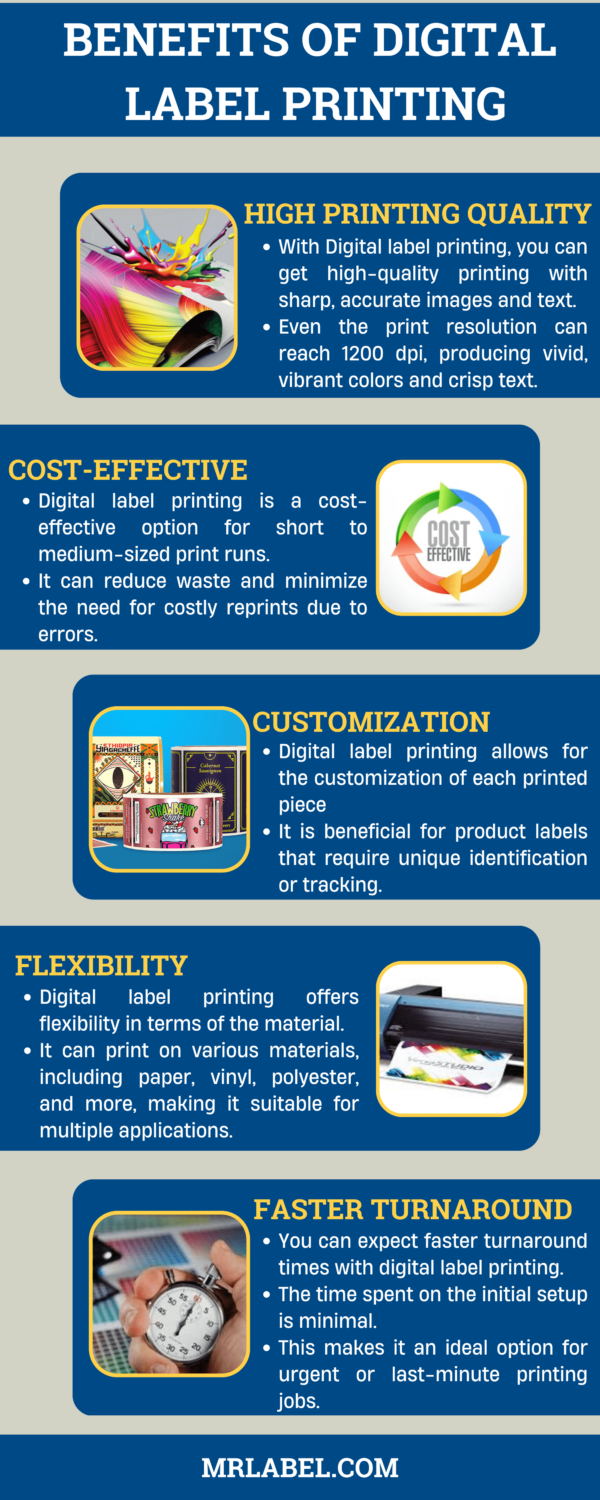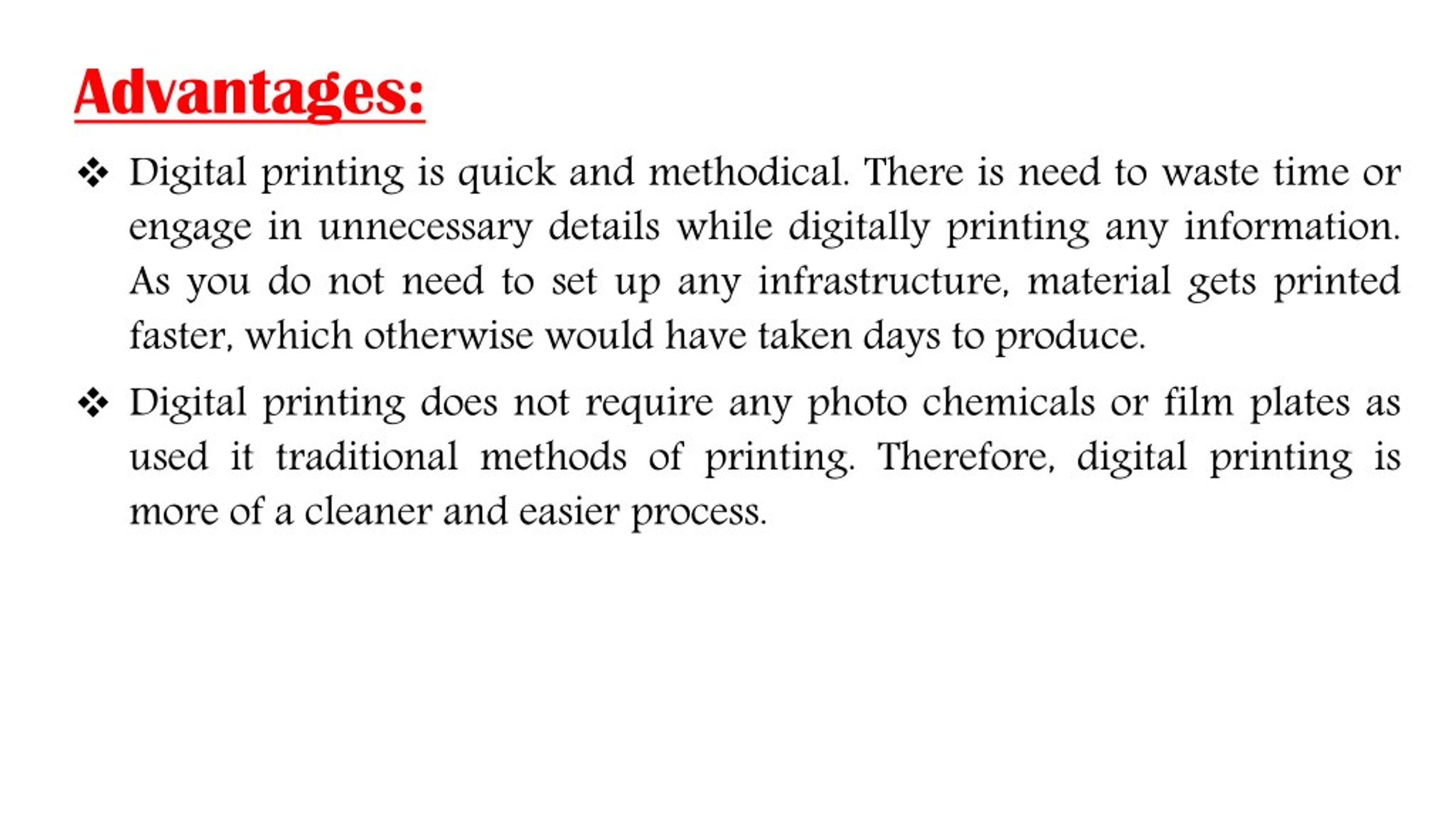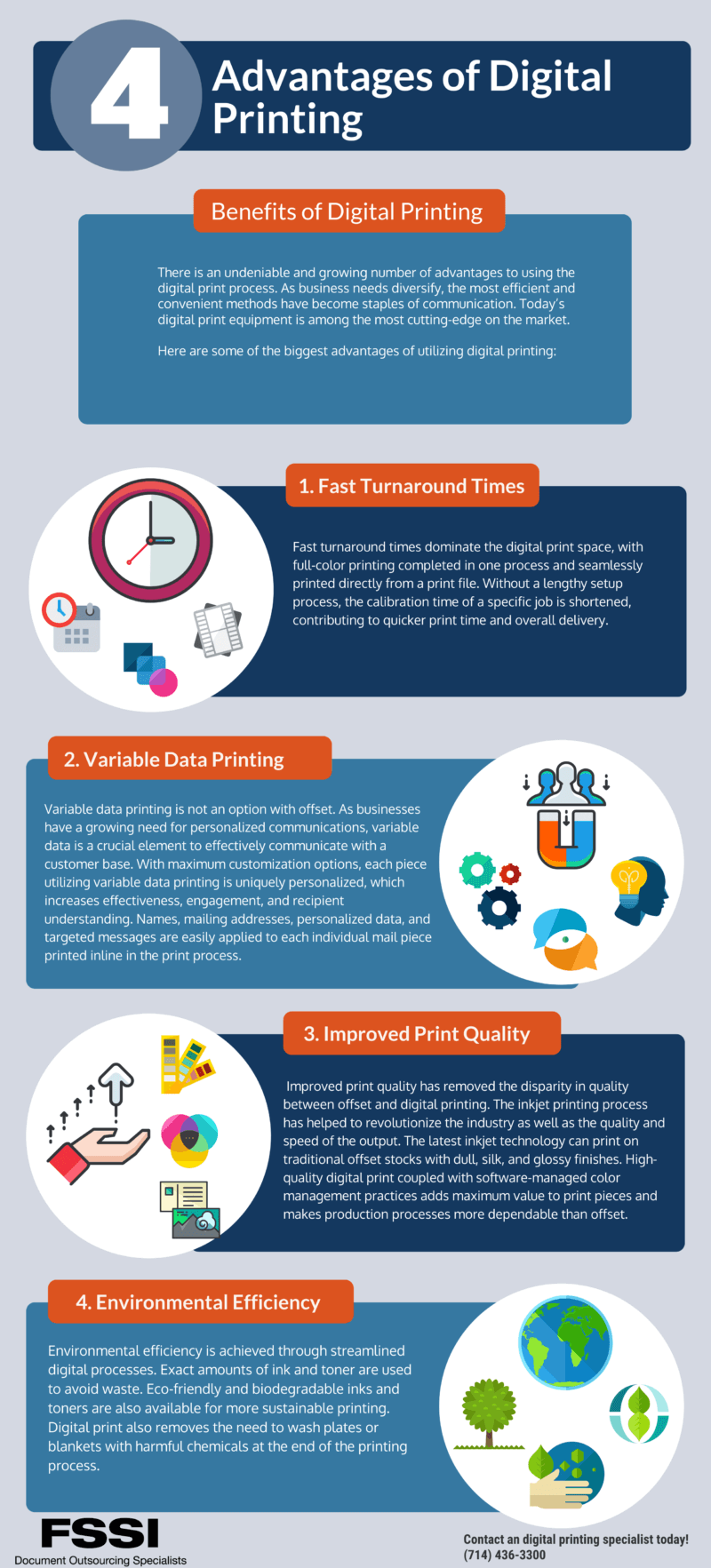Getting The Digital Printing To Work
The Main Principles Of Digital Printing
Table of ContentsThe Best Strategy To Use For Digital PrintingNot known Incorrect Statements About Digital Printing Digital Printing Fundamentals ExplainedDigital Printing for BeginnersThe Facts About Digital Printing RevealedDigital Printing for Beginners
Variable data printing, such as straight mail with customized codes and addresses, is ideally suited for digital printing. Digital fast printing only requires four actions of layout, review, printing and binding to obtain everything done. Digital quick printing has an unparalleled benefit: print on need.According to PMMI, digital printing enables brand names and manufacturers to respond rapidly to client demands while enhancing the supply chain, lowering warehousing expense and waste, and delighting in faster time to market. That all sounds great, yet just how does this innovation do all that? The significant differentiator of these innovations is that there are no set up costs and no plates with electronic printing.
About Digital Printing
According to Wikipedia, the best distinction in between digital printing and traditional techniques such as lithography, flexography, gravure, or letterpress - Digital Printing is that there is no requirement to replace printing plates in electronic printing, whereas in these analog printing techniques home plates are continuously replaced. This results in quicker turnaround time and decreases cost when making use of electronic printing.
Digital printing is extremely adaptable, so it's very easy to make modifications to the package layout rapidly. It all goes back to the plates.
More supply can mean more waste in the future. With traditional printing approaches, short-run printing is just not feasible. Since an excellent design can make or break your item, electronic printing regularly develops premium, clear and vivid graphics each time. Digital printing on flexible bags includes the brilliant, vibrant, and accurate graphics that virtually bid consumers to reach out and touch them.
Digital printing is the process of printing digital-based pictures straight onto a range of media substrates. There is no need for a printing plate, unlike with offset printing. Digital documents such as PDFs or desktop computer posting documents can be sent out straight to the digital printing machine to publish theoretically, photo paper, canvas, textile, synthetics, cardstock and other substrates.
All About Digital Printing
According to PMMI, digital printing enables brands and manufacturers to react rapidly to customer needs while boosting the supply chain, reducing warehousing expense and waste, and delighting in faster time to market. That all sounds terrific, however how does this modern technology do all that? The significant differentiator of these innovations is that there are no set up charges and no plates with digital printing.
This results in quicker turn-around time and lowers price when utilizing electronic printing.

Digital Printing Can Be Fun For Everyone
With standard printing methods, short-run printing is just not possible. Because an excellent design can make or break your product, electronic printing consistently creates premium, clear and colorful graphics each time.

According to PMMI, digital printing permits brands and producers to react rapidly to look at this now consumer demands while enhancing the supply chain, lowering warehousing expense and waste, and enjoying faster time to market. That all audios great, yet exactly how does this modern technology do all that? The significant differentiator of these technologies is that there are no set up costs and no plates with digital printing.
The Ultimate Guide To Digital Printing
This results in quicker turnaround time and decreases price when using digital printing.
Digital printing is highly flexible, so it's easy to make changes to the package style rapidly. It all goes back to the plates.

10 Easy Facts About Digital Printing Shown
Digital printing is the procedure of printing digital-based photos directly onto a selection of media substrates. There is no requirement for a printing plate, unlike with offset printing. Digital data such as PDFs or desktop computer posting data can be sent out directly to the digital printing press to publish on paper, photo paper, canvas, material, synthetics, cardstock and various other substrates.